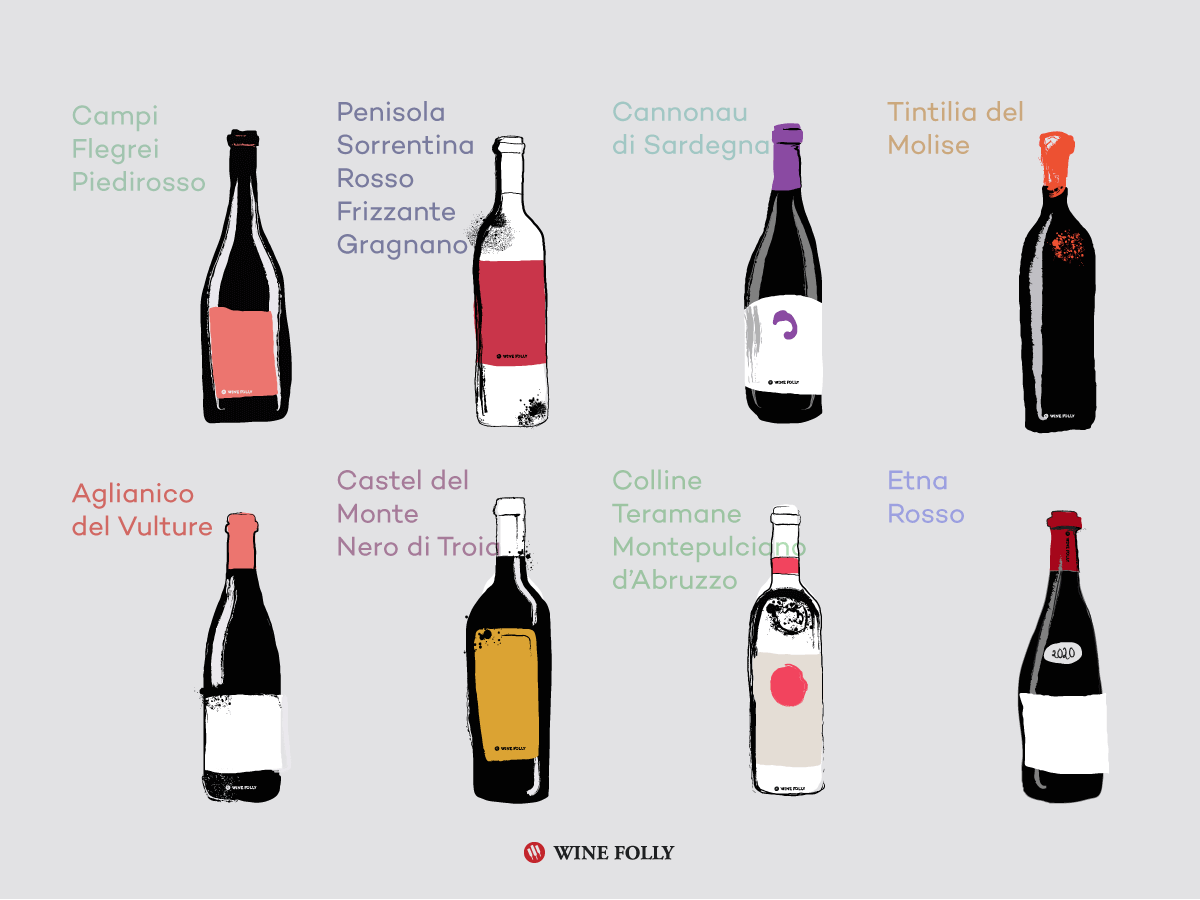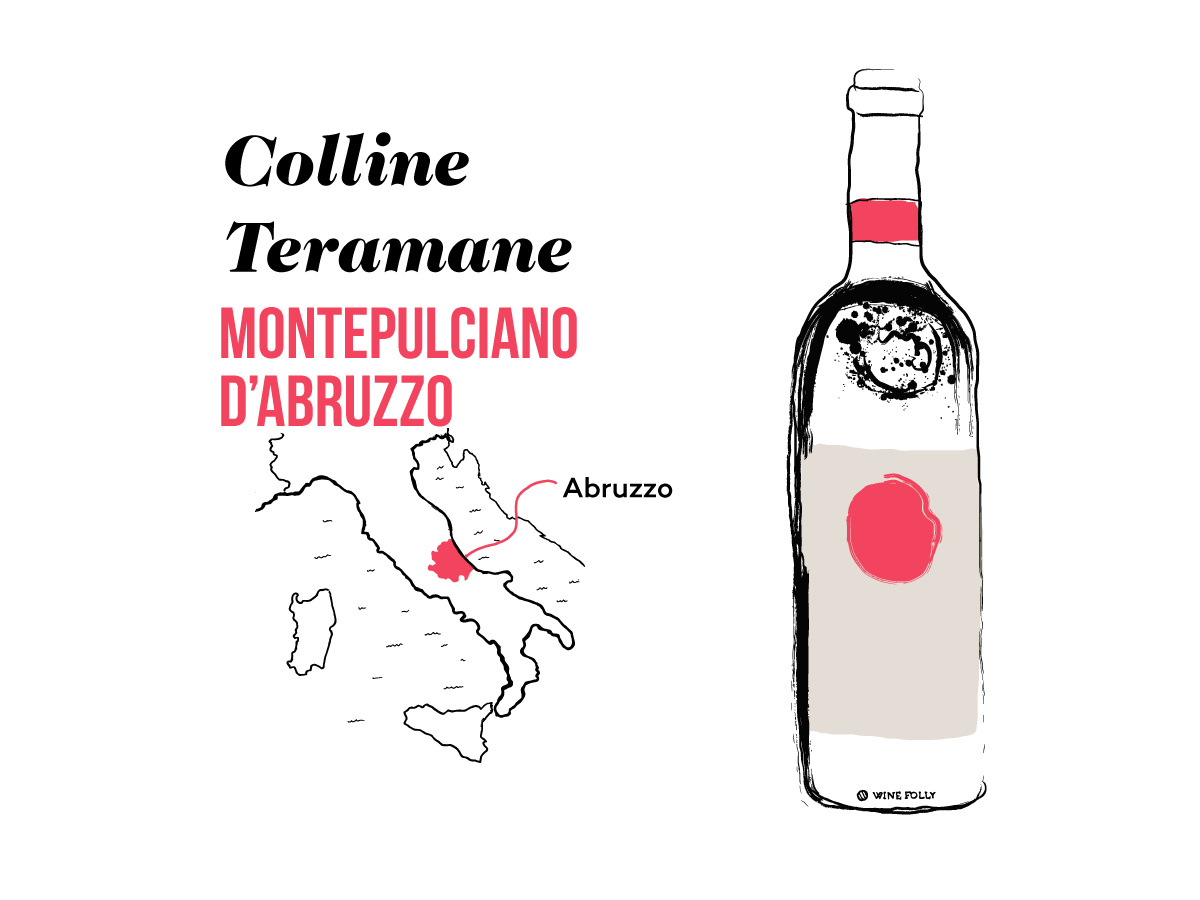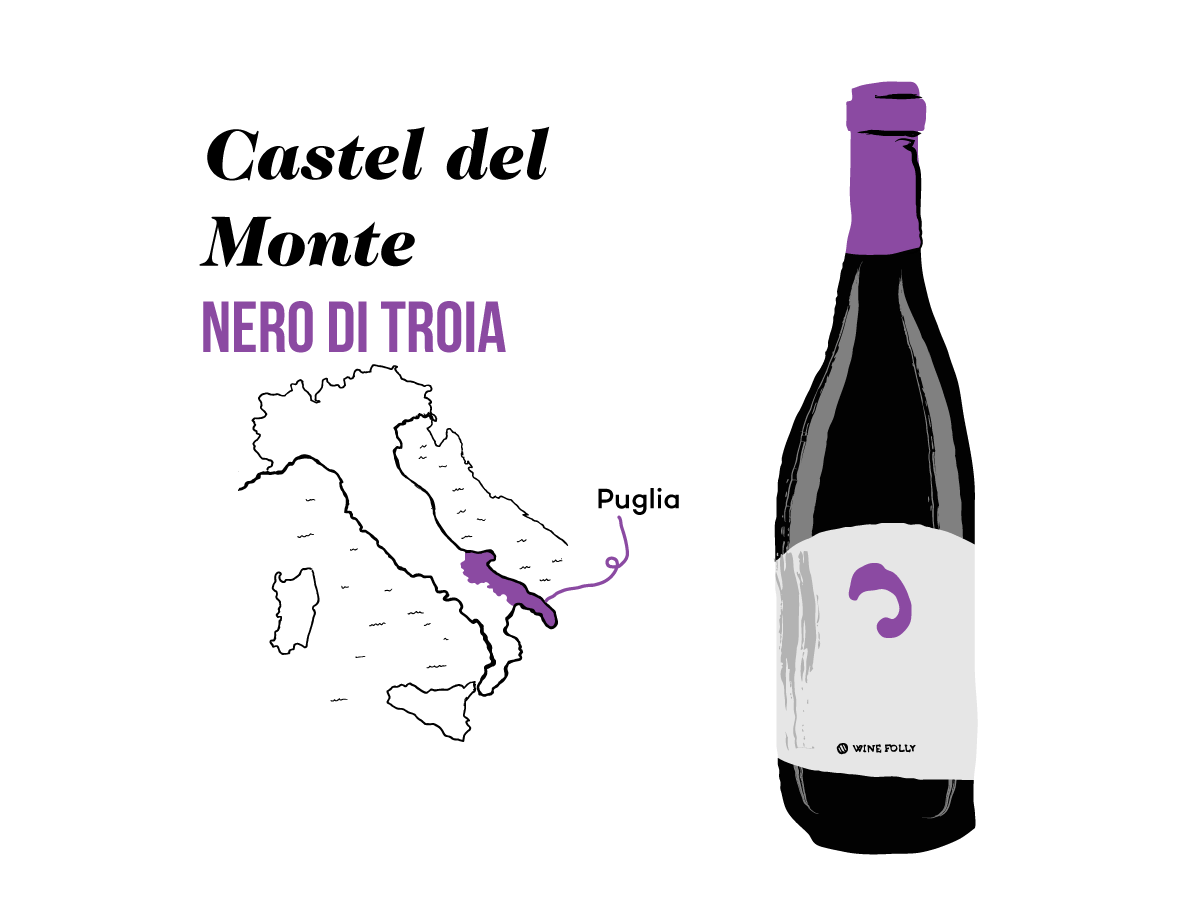Few things are as exciting as the come-from-behind winner, the one you didn’t expect — the dark horse. In that spirit, these red wines from Southern Italy aren’t well-known, but once you’ve tried them, you might give them the crown.
8 Dark Horse Red Wines from Southern Italy
This region is where Greek and Phoenician traders settled and met the native Etruscans, followed by Romans, Moors, Arabs, and Spaniards.
The result is an abundance of unique grape varieties, exceptional terroir, and spectacular wines that don’t cost a fortune.
Aglianico del Vulture
- Grape: Aglianico
- Region: Basilicata
- What to Pair: Beef stew, steak au poivre, full-flavored cheese.
While the Aglianico wines of Campania and Basilicata share the same basic flavor profile — sinewy red fruits and berries, pronounced acidity, and firm tannins — Aglianico del Vulture is darker in color and earthier in flavor. It often has a distinct chalkiness and hint of tobacco leaf in the finish.
Aglianico (al-lee-ahn-ni-ko) is the most prestigious red grape of Southern Italy. It’s part of the trio of “noble” Italian varieties, along with Nebbiolo in the north and Sangiovese in the middle.
Some think the grape is of Greek origin, but no concrete evidence exists. It’s entirely possible that Aglianico originated in southern Italy.
Its main home is Campania, where it is the star player of the renowned Taurasi and many other Aglianico-based wines.
However, its other principal outpost is right next door in Basilicata. Though Mount Vulture has been extinct for centuries, the soil at the mountain’s base, where the vines grow, is still very much volcanic and offers a very different expression of Aglianico.
Campi Flegrei Piedirosso
- Grape: Piedirosso
- Region: Campania
- What to Pair: Drink a young Campi Flegrei Piedirosso with grilled meat and vegetables or a tomato-based pasta, or pair a riserva with spit-roasted squab.
Piedirosso, locally known as Per’ e’ Palummo (“pigeon’s foot”), is the standout red variety of Campi Flegrei. It has a solid core of luscious blackberry fruit, soft tannins, tart acidity, and a long gravelly finish of baking soda, flint and a wisp of smoke.
Campania is actually a volcanic zone consisting of 24 craters, most of which are underwater. It is surrounded by a pockmarked terrain that includes several lakes and pools of boiling mud.
Native Campanian grapevines do surprisingly well in this odd, slightly spooky environment. Since phylloxera cannot survive here, many vines are old and ungrafted.
Penisola Sorrentina Rosso Frizzante Gragnano
- Grape: Aglianico, Piedirosso, Sciascinoso (shia-she-know-so)
- Region: Campania
- What to Pair: This fizzy red goes with just about anything, from grilled seafood to salumi. For Neapolitans, Gragnano is the go-to beverage with pizza.
Shiny garnet hue, fragrant aroma of rosehips and wild oregano. Tart pomegranate with hints of anise seed and black pepper, briny toasted seaweed salinity, and taut tannins, accentuated by the light fizz, which also creates a lovely pale pink sea foam on the surface. You could serve this one with a chill as it’s a lighter option among the red wines from southern Italy.
Native grapevines are planted in the foothills of the Lattari Mountains. The soil contains compressed marine sea fossils, airborne rocks, stones, and dust from past volcanic eruptions.
This unique soil composition, ample Mediterranean sunshine, big diurnal shifts (the difference between day and night-time temperatures), and salty breezes off the sea produce delicious red and white wines.
The most interesting and appealing are the red frizzante (fizzy) wines from three subzones, each named after a town: Lettere, Sorrento, and Gragnano (gran-yan-oh).
Colline Teramane Montepulciano d’Abruzzo
- Grape: Montepulciano (mon-ta-pull-chee-anno)
- Region: Abruzzo
- What to Pair: Whichever Montepulciano you choose, the pairing recommendation is the same: Arrosticini Abruzzese!
Wines with dark black cherry and black currants with a slightly dried leathery edge, supple tannins, tangy acidity and a bitter chocolate finish with a hint of fresh cilantro.
Montepulciano is a very important grape in Southern Italy, especially for Abruzzo. It is the star attraction, accounting for over half of all grapevines planted in the region.
In addition to representing the region, Montepulciano d’Abruzzo offers a wide range of wines, from affordable everyday options to some of the most compelling (and expensive) wines in all of Italy.
Tintilia del Molise
- Grape: Tintilia
- Region: Molise
- What to Pair: Rosemary-sage roasted pork chops, braised cotechino sausage, wild mushroom risotto, or anything else that strikes your fancy.
This dark purple wine has dense, juicy black plum and blackberry flavors, a touch of black pepper, moderate acidity, and long, velvety tannins with a lingering finish and an appealing hint of warm asphalt.
Molise is Italy’s second-smallest region and one of the newest. It officially separated from its northern neighbor, Abruzzo, in 1963.
While some believe Tintilia is of Iberian origin, connecting the name of the grape to the Spanish word ‘tinto’ (red), it has been around as long as anyone can recall and was traditionally used to soften Montepulciano, Molise’s most widely planted vine.
However, more producers are supporting Tintilia, and in 2011, a new appellation requiring a minimum of 95% Tintilia was created to showcase it. Whatever its origins, Tintilia del Molise is a distinctive and promising regional ambassador.
Castel del Monte Nero di Troia
- Grape: Nero di Troia
- Region: Puglia (pull-yee-ah)
- What to Pair: Bombette Pugliese (bite-sized meat rolls stuffed with cheese and pancetta that originated in Puglia)
This wine is dark red (almost opaque) and has a rich texture, angular tannins, and firm acidity. It reveals blackberry, plum, and blueberry flavors, with rosemary, thyme, black pepper, and licorice on the finish.
Native to Puglia, Nero di Troia flourishes in the Castel del Monte DOCG, where limestone soils and a Mediterranean climate shape its bold, age-worthy character.
Nero di Troia pairs perfectly with rich local dishes like braised lamb or orecchiette with tomato and ricotta forte, offering an authentic taste of Puglia.
Cannonau di Sardegna (Sar-dain-ya)
- Grape: Cannonau (can-nun-now)
- Region: Sardinia
- What to Pair: Drink a young Cannonau (perhaps slightly chilled) with hard cheeses/salami/olives or marinated vegetable antipasti. Alternatively, try it with a typical Sardinian dish of saffron Malloreddus with sausage, tomato, and pecorino Sardo. Also, try pairing a riserva, classico, or subzone with grilled lamb brushed with rosemary.
All versions of Cannonau share the same basic characteristics: ripe red cherries, blackberries, and plums, medium-to-dark color, soft tannins, a subtle floral aroma, a hint of wild herbs, and a touch of salinity.
A riserva or classico will add more body, intensity, and aging potential. On the other hand, a Cannonau from one of the sub-zones will have more defined character nuances, reflecting its specific territory.
Cannonau is the region’s most important grape, growing throughout the island and reflecting its extremely diverse terroirs.
In the warmer southern coastal areas, it produces riper, juicier wines with more Mediterranean influence. In contrast, in the mountains on the eastern side, it is more muscular and structured, with bigger body and longer aging potential.
In addition to the basic Cannonau, there is also a riserva version (which requires longer aging), a classico (from a more restricted growing area), and three official subzones — Oliena, Jerzu, and Capo Ferrato — on the eastern side.
Etna Rosso
- Grape: Nerello Mascalese
- Region: Sicily
- What to Pair: Drink a young Etna Rosso with grilled octopus and tomato or rare-seared tuna. Alternatively, pair an older contrada wine with braised beef and bone marrow.
Transparent garnet, with medium body, captivating aromas of dried rose, wild herbs and a hint of sulfur. Tart pomegranate and sour cherry flavors, with prickly pear acidity, supple leathery tannins and a long gentle finish.
Etna wines typically exhibit restraint, complexity, and finesse and develop well over time, which explains why many tasters compare Etna Rosso to Burgundy and Barolo.
Mount Etna is the biggest volcano in Europe and one of the most active volcanoes in the world. Grapes have been growing on its slopes since the time of the ancient Greek settlers.
In addition to soil, there are significant differences in exposure and altitude, which create huge day-to-night shifts and an unusual combination of subtropical, Mediterranean, and continental climates.
Add to this a preponderance of extremely old vines — 80-100+ years is not uncommon. In addition, the unique characteristics of the Nerello Mascalese grape (and its sidekick, Nerello Capuccio) deliver some very cool wines.
Now that you’ve bulked up your to-try list of red wines from Southern Italy, don’t get intimidated! Many of these wines are within reach from your local wine market or online. Remember, just because they sound amazing doesn’t mean you have to fill the cellar up today.
But no one would hold it against you if you did. Discover even more delicious choices with our Italian Wine Exploration Guide.









